In the height of the pandemic, many Americans who attended in-person worship services turned to their computers and their couches instead for virtual viewing.
Now, the Pew Research Center finds a third of Americans regularly attend in-person worship services while a bit more than a quarter regularly watch religious services on TV or online.
Its new survey paints a detailed picture of which, why and how often Americans continue worshipping online or on TV.
Half of those who are regular online watchers of religious services usually do so alone.
More than half (61%) of those who virtually attend do not participate in worship activities as they did in person, such as singing, kneeling or praying out loud. But Black (49%) and Hispanic (47%) online worshippers are more likely to continue these practices virtually.
Your tax-deductible gift helps our journalists report the truth and hold Christian leaders and organizations accountable. Give a gift of $30 or more to The Roys Report this month, and you will receive a copy of “Hurt and Healed by the Church” by Ryan George. To donate, haga clic aquí.
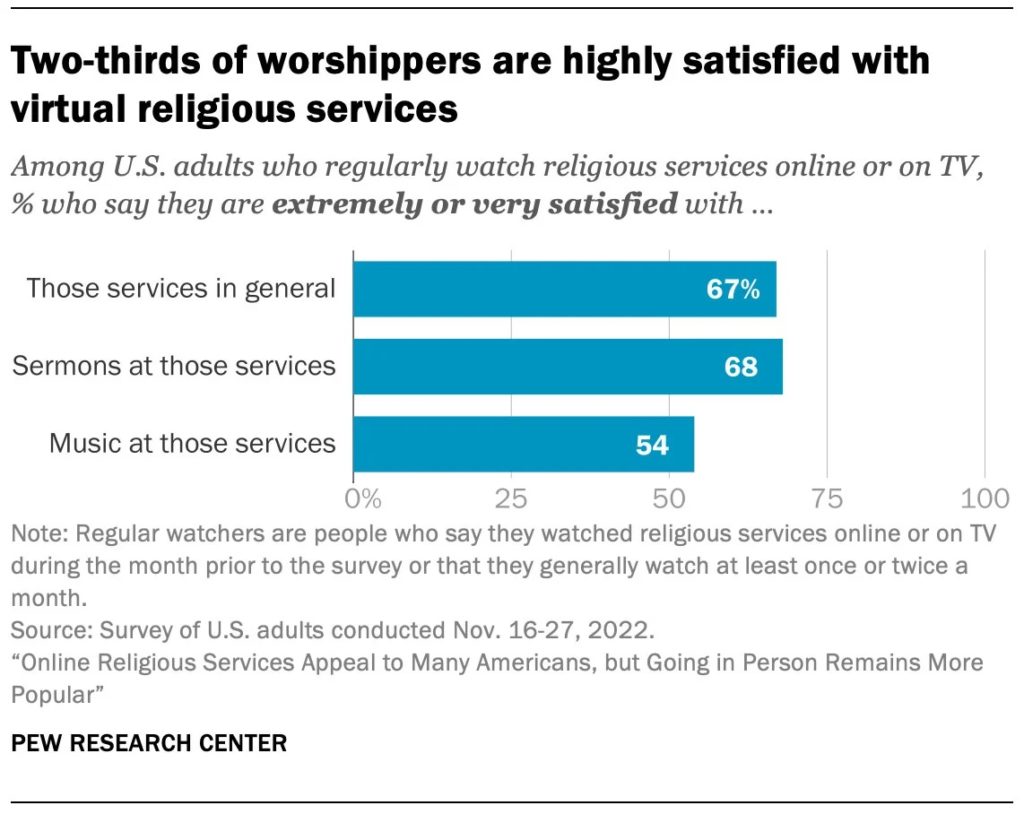
And while the majority (60%) of virtual viewers watch the worship service of one congregation, 32% watch those of two or three houses of worship and 6% watch four or more different congregations. One-quarter of regular online worshippers say they exclusively watch services of the congregation they usually attend.
“Regular” attenders were defined as those who said they watched or attended services in the month before the survey or had attended or watched at least monthly.
The online survey of more than 11,000 Americans reports significant levels of satisfaction among those who are worshipping online.
“Broadly speaking, the survey finds that most Americans who watch religious services on screens are happy with them,” states the report on the survey, which was released on Friday (June 2). “Two-thirds of U.S. adults who regularly stream religious services online or watch them on TV say they are either ‘extremely satisfied’ or ‘very satisfied’ with the services they see.”
A similar share of U.S. adults (68%) say they are extremely or very satisfied with the sermons and a bit more than half say they’re also quite satisfied with the music they hear at worship services they view online or on TV.
Still, a larger share of U.S. adults express significant satisfaction with aspects of in-person worship, with 74% of those who attend in person saying they are very or extremely satisfied with the sermons and 69% saying the same about the music.
Researchers delved into the nuances of religion and technology to report on the state of virtual and in-person worship in a survey taken in November, after the pandemic had waned but before the end of the national health emergency.
The top major reason adults say they watch religious services online is because they’re convenient. While 43% of regular virtual viewers cite convenience, just a quarter cite safety, specifically a concern about contracting or spreading COVID-19 or other diseases.
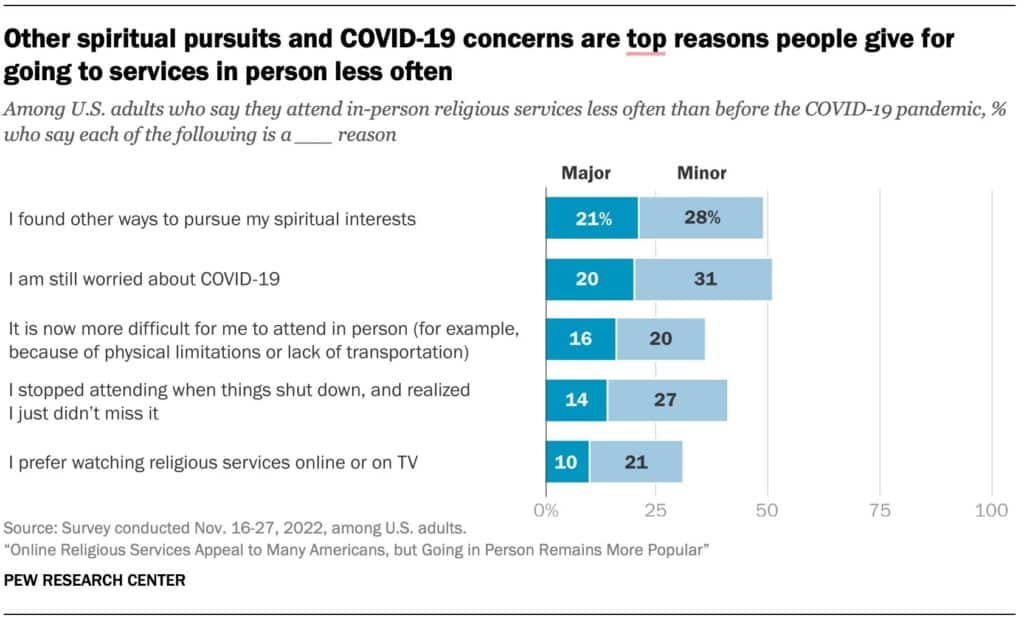
But COVID remains a factor for some Americans who say they attend in-person services less often than they did before the pandemic. While 21% of less frequent attenders say they found other ways to pursue spiritual interests, an almost equal percentage (20%) said “I am still worried about COVID-19.”
There also is a distinct difference in the feelings of connection depending on whether Americans worship online or in person.
About two-thirds of regular in-person attenders say they feel “quite a bit” or “a great deal” of connection with other attenders, choosing the highest two options on a five-point scale. Just 28% of regular virtual viewers report the same sense of connection with in-person attenders while they, the virtual participants, are watching on TV or online. And a somewhat smaller percentage — 22% — of virtual observers say they feel a strong connection to others watching virtually.
Of the quarter or so Americans who continue to use screens to take part in worship services, three-quarters say they prefer the in-person experience, compared with 11% who prefer watching on TV or online and 14% who say they don’t have a preference.
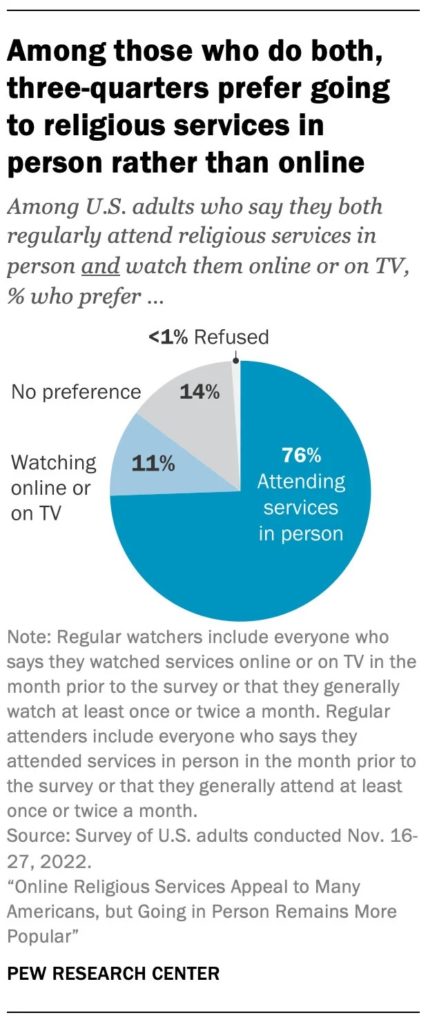
Among the people who are most likely to watch church services virtually are members of historically Black Protestant denominations. Nearly 6 in 10 (58%) say they watch online at least monthly or did so in the month before the survey, compared with 47% of evangelicals, 28% of mainline Protestants, 24% of Catholics and 19% of Jews.
Two in 10 of these Black Protestants solely watch remotely via screens, 37% attend virtually and in person and more than 1 in 10 (13%) say they are in-person attenders who don’t regularly choose to watch virtual services.
Black Protestant church members also are more likely than viewers of some other faiths to say they feel like active participants in services they’re watching virtually. They also were the group with the largest percentage — 25%— of people who watch services of another congregation in addition to or other than their own.
Members of historically Black Protestant churches (37%), along with evangelical Protestants (28%), are the most likely to engage at least weekly in religious technology, including apps for prayer or Scripture or religious study groups. About 12% each of Catholics, Jews and mainline Protestants are considered heavy users of religious technology.
Other findings of the survey on religion and technology included:
- 30% of U.S. adults say they use online searches to gain religious information.
- 21% use websites or apps to help them read the Bible and other Scriptures.
- 15% listen to podcasts focused on religion.
- 14% use websites or apps as reminders to pray.
More than half of U.S. adults — 54% — say they never use apps for prayer, Scripture study or religious information, nor do they listen to religious podcasts.
The online survey of 11,377 respondents was conducted between Nov. 16 and 27, 2022, and had a margin of error of plus or minus 1.4 percentage points. Margin of error for subgroups varied widely, including plus or minus 2.9 percentage points for evangelical Protestants and 5.3 percentage points for historically Black Protestants and 9.8 for Jewish respondents.
 Adelle Banks es editora de producción y corresponsal nacional de Religion News Service.
Adelle Banks es editora de producción y corresponsal nacional de Religion News Service.






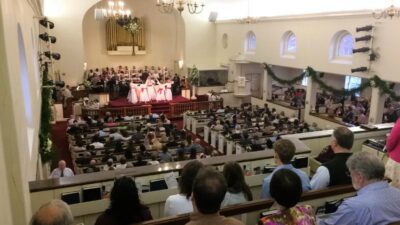
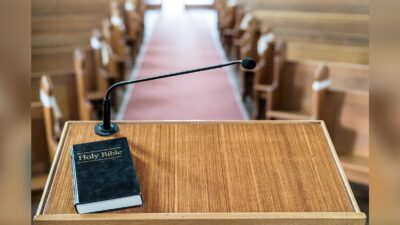
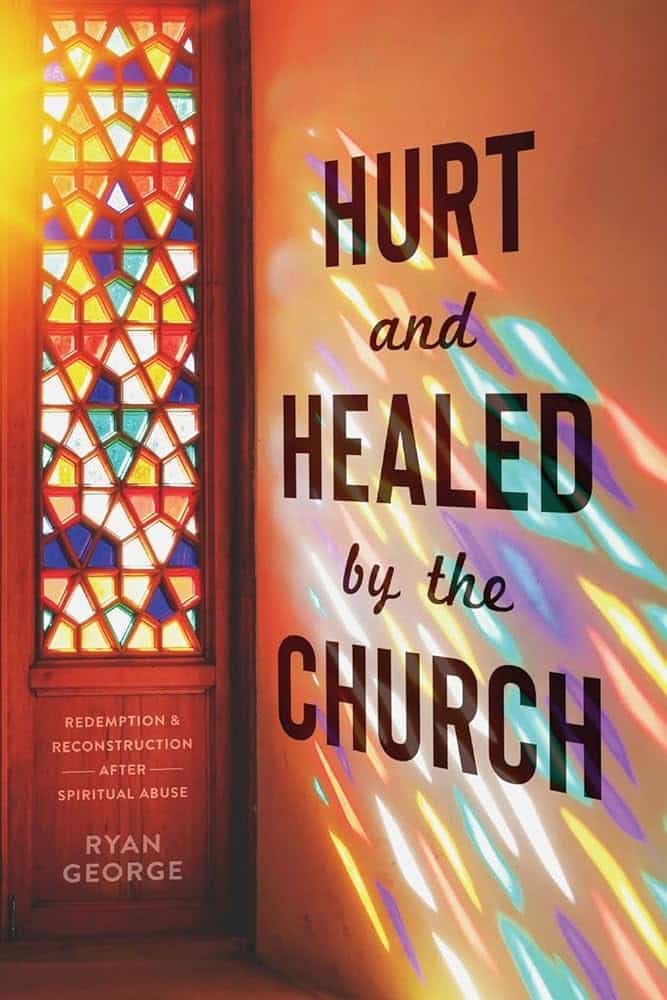











3 Respuestas
Surprising that over half never use apps for prayer, scripture study or religious information. Every Christian I know does that…
Watching services at home on a laptop is a great blessing to those who find it difficult to travel to church. This disproportionately means the elderly. Choosing to worship at home should not be smugly denigrated by younger, healthier people, and that includes pastors. A lot of people are in an “in between” stage (not yet absolutely unable to travel to church but finding it a great burden to travel to church). News flash to the judgmental: people know more about their health situation than nosy onlookers do.
“In the height of the pandemic, many Americans who attended in-person worship services turned to their computers and their couches instead for virtual viewing.”
Of course they did, churches closed their doors, told the congregation that there was no difference between in person, and remote attendance, when some pushed back against the closures.
It appears that the churches are continuing their damage control propaganda, trying to rewrite history as to why people stopped in person attendance, while not accepting responsibility for the role they played.